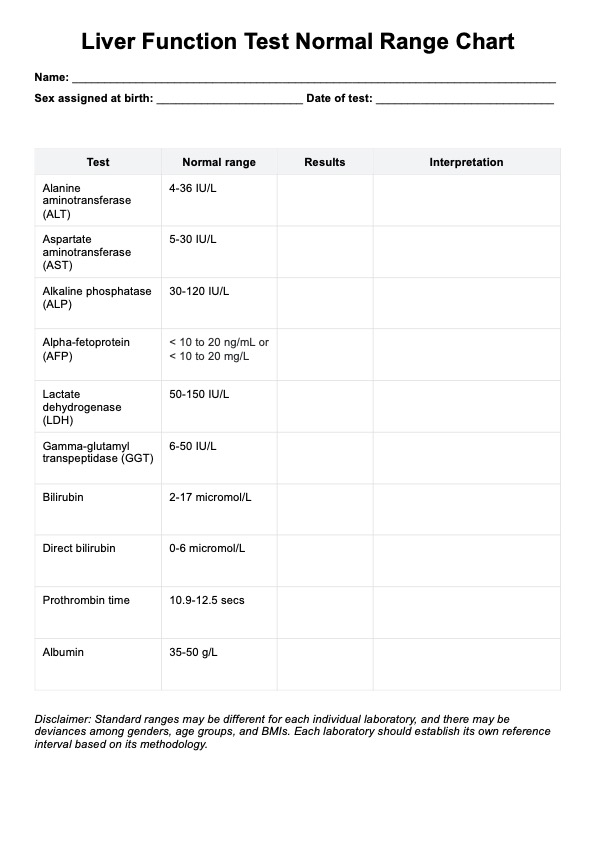A good ALT to AST ratio, also known as the De Ritis ratio, is generally considered to be around 1:1. A ratio greater than 2:1 is often seen in alcoholic liver disease.

Liver Function Test Normal Range
Understand the optimal liver function with our comprehensive chart, detailing normal ranges for liver function tests, vital for healthcare assessment.
Use Template
Liver Function Test Normal Range Template
Commonly asked questions
AST and ALT levels greater than 2-3 times the normal range can indicate cirrhosis, especially if the AST is higher than the ALT, often seen in advanced liver disease or acute viral hepatitis.
The normal range for liver function tests varies, but common ranges are ALT (4-36 IU/L), AST (5-30 IU/L), ALP (30-120 IU/L), and Bilirubin (2-17 micromol/L). Always compare results with lab-specific reference ranges.
EHR and practice management software
Get started for free
*No credit card required
Free
$0/usd
Unlimited clients
Telehealth
1GB of storage
Client portal text
Automated billing and online payments











